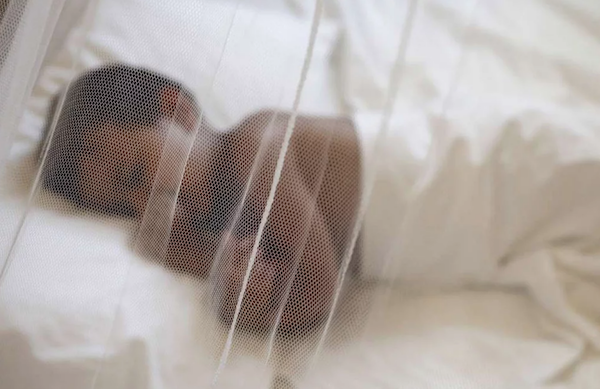LA JOLLA, CA—Dengue and Zika viruses are closely related and carried by mosquitos. In infested subtropical and tropical areas, dengue transmission often precedes Zika virus (ZIKV) infection, suggesting that women who previously acquired dengue immunity may be bitten by ZIKV-carrying mosquitoes during pregnancy. Whether that mother’s prior dengue immunity would protect her unborn baby from devastating brain defects such as microencephaly associated with ZIKV is unknown.
Now the laboratory of La Jolla Institute for Immunology (LJI) investigator Sujan Shresta, Ph.D., reports critical findings in mouse models that address this question experimentally. Their paper, published in the August 2, 2018, edition of Nature Communications, shows that when dengue-immune pregnant mice are exposed to ZIKV, their embryos remain viable and normal-looking. The researchers also detected a population of immune cells, known as CD8+ cytotoxic T cells, mobilized as an immune response to dengue infection, which recognize ZIKV and limit the infection in pregnant mice.
These findings could guide development of more effective flavivirus vaccines and hint at what types of immune responses are maximally protective against fetal brain damage after Zika invasion.
“A key question has been why only a subset of Zika-exposed mothers in dengue-endemic countries like Brazil give birth to children with congenital birth defects,” says Shresta, an associate professor in LJI’s Center for Infectious Disease. “Given that these viruses are so similar to each other, we wondered if prior immunity to dengue could confer cross-protection against Zika.”

In 2017, her lab provided support for this idea when they reported that dengue-infected adult mice exhibit immunity against Zika infection due to induction of cross-reactive CD8+ T cells. The new paper describes a variation on that experiment: dengue-immune female mice (or dengue-naïve controls) were mated to induce pregnancy and then infected with ZIKV at early an embryonic stage to test whether dengue immunity shielded not just mothers but fetuses from damage.
The results were dramatic. Fetuses from dengue-naive controls either disappeared or markedly shrank, as predicted following Zika infection. By contrast, fetuses of dengue-immune mice infected with ZIKV appeared normal, and many were indistinguishable from mice never exposed to ZIKV. Other experiments revealed that CD8+ cytotoxic T cells raised by dengue infection remained present at the maternal/placental border of Zika-infected pregnant mice, suggesting a line of defense against ZIKV transmission across the placenta. Experimental elimination of those specific T cells confirmed this to be true: fetuses became vulnerable to destruction by Zika infection.
The group also injected female mice never exposed to dengue with short dengue virus proteins or “peptides” known to induce T cell responses in order to simulate a vaccine scenario. When these vaccinated mice were made pregnant and exposed to ZIKV, they showed decreased Zika infection in the placenta compared to unvaccinated mice, demonstrating that the T cell response was effective.
Currently, there are no FDA-approved Zika vaccines, and those under development elicit primarily antibody (B cell) rather than T cell responses. Anti-dengue vaccines that also primarily evoke antibody rather than T cell responses are in clinical trials and show only moderate success.
One conclusion is that an effective vaccine will require both types of immunity. “Dengue and ZIKV are carried by the same mosquitoes, co-circulate in overlapping geographic ranges, are structurally related, and evoke cross-reactive antibody and T cell responses,” says Jose Angel Regla-Nava, Ph.D., a postdoctoral fellow in the Shresta lab and a co-lead author. “Both antibody and T cell responses together may be required for protection against these infections.”
Given this evidence, it may seem surprising that almost all vaccines marketed today were designed to evoke antibody responses. “Historically, it has been more straightforward to design vaccines that elicit antibody responses,” says postdoctoral fellow Annie Elong Ngono, Ph.D., the study’s co-lead author. “Creating vaccines that induce strong T cell responses is very challenging and will require new technologies. But our findings that cross-reactive T cells elicit a strong response against two related viruses encourage that approach.”
Persistence of cross-reactive T cells may also solve the South American epidemiological puzzle. “This and our previous study in mice show that prior dengue immunity provides cross-protection against ZIKV and may explain why not every pregnant woman exposed to ZIKV gives birth to an affected child,” says Shresta. “But in mice, we find that period of cross-protection to be short. So we are working on ways to boost this cross-protective immunity.”
This study was funded by NIH grants (R01 AI116813 and R21 NS100477, P01 AI106695, R01 AI073755 and R01 AI127828) and by the Chiba-UCSD Center for Mucosal Immunology, Allergy and Vaccine Development.
Doi: 10.1038/s41467-018-05458-0
About La Jolla Institute for Immunology
The La Jolla Institute for Immunology is dedicated to understanding the intricacies and power of the immune system so that we may apply that knowledge to promote human health and prevent a wide range of diseases. Since its founding in 1988 as an independent, nonprofit research organization, the Institute has made numerous advances leading toward its goal: life without disease.
###


